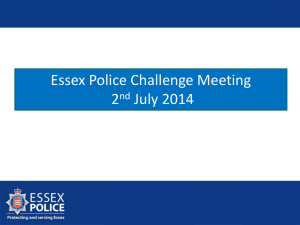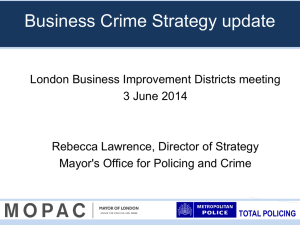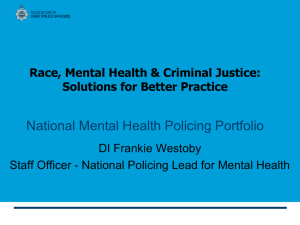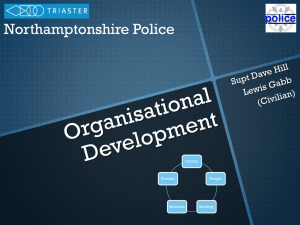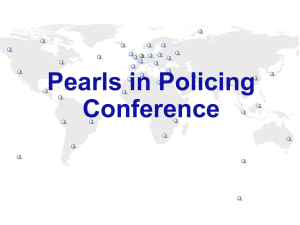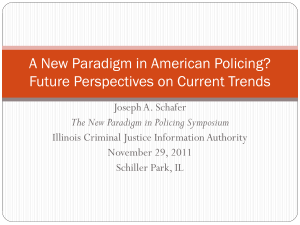Threat to policing in Bushy Park - The Friends of Bushy and Home
advertisement
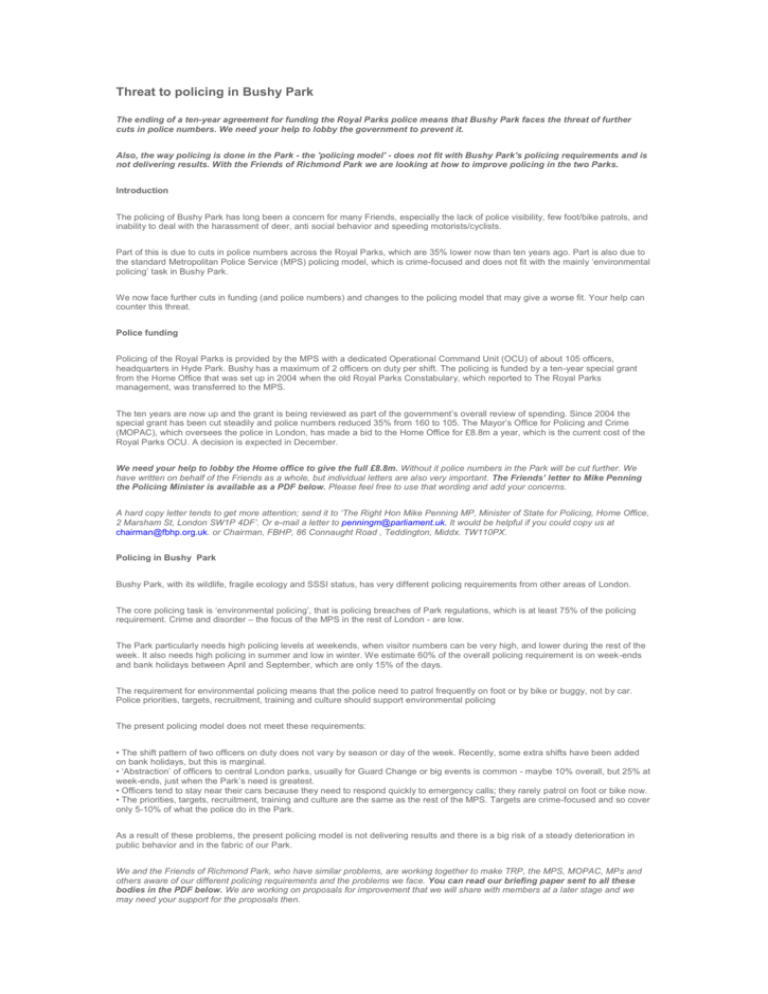
Threat to policing in Bushy Park The ending of a ten-year agreement for funding the Royal Parks police means that Bushy Park faces the threat of further cuts in police numbers. We need your help to lobby the government to prevent it. Also, the way policing is done in the Park - the 'policing model' - does not fit with Bushy Park's policing requirements and is not delivering results. With the Friends of Richmond Park we are looking at how to improve policing in the two Parks. Introduction The policing of Bushy Park has long been a concern for many Friends, especially the lack of police visibility, few foot/bike patrols, and inability to deal with the harassment of deer, anti social behavior and speeding motorists/cyclists. Part of this is due to cuts in police numbers across the Royal Parks, which are 35% lower now than ten years ago. Part is also due to the standard Metropolitan Police Service (MPS) policing model, which is crime-focused and does not fit with the mainly ‘environmental policing’ task in Bushy Park. We now face further cuts in funding (and police numbers) and changes to the policing model that may give a worse fit. Your help can counter this threat. Police funding Policing of the Royal Parks is provided by the MPS with a dedicated Operational Command Unit (OCU) of about 105 officers, headquarters in Hyde Park. Bushy has a maximum of 2 officers on duty per shift. The policing is funded by a ten-year special grant from the Home Office that was set up in 2004 when the old Royal Parks Constabulary, which reported to The Royal Parks management, was transferred to the MPS. The ten years are now up and the grant is being reviewed as part of the government’s overall review of spending. Since 2004 the special grant has been cut steadily and police numbers reduced 35% from 160 to 105. The Mayor’s Office for Policing and Crime (MOPAC), which oversees the police in London, has made a bid to the Home Office for £8.8m a year, which is the current cost of the Royal Parks OCU. A decision is expected in December. We need your help to lobby the Home office to give the full £8.8m. Without it police numbers in the Park will be cut further. We have written on behalf of the Friends as a whole, but individual letters are also very important. The Friends’ letter to Mike Penning the Policing Minister is available as a PDF below. Please feel free to use that wording and add your concerns. A hard copy letter tends to get more attention; send it to ‘The Right Hon Mike Penning MP, Minister of State for Policing, Home Office, 2 Marsham St, London SW1P 4DF’. Or e-mail a letter to penningm@parliament.uk. It would be helpful if you could copy us at chairman@fbhp.org.uk. or Chairman, FBHP, 86 Connaught Road , Teddington, Middx. TW110PX. Policing in Bushy Park Bushy Park, with its wildlife, fragile ecology and SSSI status, has very different policing requirements from other areas of London. The core policing task is ‘environmental policing’, that is policing breaches of Park regulations, which is at least 75% of the policing requirement. Crime and disorder – the focus of the MPS in the rest of London - are low. The Park particularly needs high policing levels at weekends, when visitor numbers can be very high, and lower during the rest of the week. It also needs high policing in summer and low in winter. We estimate 60% of the overall policing requirement is on week-ends and bank holidays between April and September, which are only 15% of the days. The requirement for environmental policing means that the police need to patrol frequently on foot or by bike or buggy, not by car. Police priorities, targets, recruitment, training and culture should support environmental policing The present policing model does not meet these requirements: • The shift pattern of two officers on duty does not vary by season or day of the week. Recently, some extra shifts have been added on bank holidays, but this is marginal. • ‘Abstraction’ of officers to central London parks, usually for Guard Change or big events is common - maybe 10% overall, but 25% at week-ends, just when the Park’s need is greatest. • Officers tend to stay near their cars because they need to respond quickly to emergency calls; they rarely patrol on foot or bike now. • The priorities, targets, recruitment, training and culture are the same as the rest of the MPS. Targets are crime-focused and so cover only 5-10% of what the police do in the Park. As a result of these problems, the present policing model is not delivering results and there is a big risk of a steady deterioration in public behavior and in the fabric of our Park. We and the Friends of Richmond Park, who have similar problems, are working together to make TRP, the MPS, MOPAC, MPs and others aware of our different policing requirements and the problems we face. You can read our briefing paper sent to all these bodies in the PDF below. We are working on proposals for improvement that we will share with members at a later stage and we may need your support for the proposals then.
